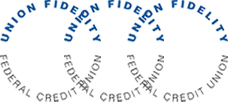Kids Learning Center
The idea for credit unions was based on the imple principle that ordinary people could pool their money and make loans to each other. Credit unions are financial cooperatives, owned by the people who save and borrow there. Once you deposit money in a credit union, you become a member. Credit unions serve groups that share something in common, such as where they work, live, or go to church.
Every member is an owner with an equal vote in the election of the credit union's volunteer board of directors. Credit unions return earnings to their members in the form of lower rates on loans, higher dividends on savings, and fewer and lower service fees. Many credit unions have expanded their services to include credit cards, debit cards, checking accounts, online services, IRAs, mortgages, and student loans.
As with other financial institutions, credit unions are regulated by state and federal agencies. The funds credit union members deposit are insured by the National Credit Union Administration up to $100,000.
A Brief Credit Union Timeline
While Internations Credit Union Day has been celebrated for the past 52 years, the beginnings of credit unions evolved in early 19th century Europe. We pay tribute to these founders and to the many people today who continue the commitment that sustains and builds today's cooperative financial institutions.
- A group of workers and weavers in Rochdale, England, organized the first financial cooperative in 1844.
- Friedrich Wilhelm Raiffeisen, mayor of Flammersfeld, Germany, created the first credit cooperative in Germany. He conceived of the idea for a credit union to help alleviate the distress of farmers suffering from the famine that had struck his district. Although the credit union was not officially formed until December 1, 1849, credit union people have celebrated the year 1848 since the 1940s.
- In 1900, a Canadian named Alphonse Desjardins organized a credit union (caisse populaire) in Levis, Quebec. In 1909, Desjardins also organized the first credit union in the United States in New Hampshire.
- Two Americans were influenced by Desjardins' efforts - Pierre Jay, the Massachusetts banking commisioner, and Edward A. Filene, a Boston merchant. The two men helped organize pulic hearings on credit union legislation in Massachusetts, leading to passage of the first state credit union act in 1909.
- In 1921, Filene created the Credit Union National Extension Bureau and hired Massachusetts attorney Roy F. Bergengren to help him. Filene poured more than $1 million of his own money into the project. Bergengren appeared before the state legislators, helping pass laws and initiating voluteer organizers into the "movement."
- Congress passed a Federal Credit Union Act in 1934 to facilitate the organization of federal credit unions across the United States. That same year, the Credit Union National Association (CUNA) was formed as a confederation of state associations. By 1935, 39 states had credit union laws, and 3,372 credit unions were serving 641,800 members.
- In the late 1990s the future of U.S. credit unions was threatened by court actions that would have restricted credint unions' membership to a narrow common bond. Congress responded with favorable legislation that helped credit unions retain their principles while allowing for future growth. In August 1998, President Clinton signed H.R. 1151, the Credit Union Membership Access Act, into law.
A Little Story About a Boy Named Abe
 There was a boy named Abe. His parents had very little money coming in. So Abe decided to work hard and pay for college himself. He became a lawyer. He learned how to make his money grow. Eventually, he got an important job and stayed wealthy. That boy was Abraham Lincoln.
There was a boy named Abe. His parents had very little money coming in. So Abe decided to work hard and pay for college himself. He became a lawyer. He learned how to make his money grow. Eventually, he got an important job and stayed wealthy. That boy was Abraham Lincoln.
 A boy named George was also poor. His parents put him in an orphanage. He became an athlete and made even more money than the President of the United States. But he didn't know how to keep that money. Pretty soon, there wasn't much left. George's middle name was Herman, but everyone called him Babe - Babe Ruth.
A boy named George was also poor. His parents put him in an orphanage. He became an athlete and made even more money than the President of the United States. But he didn't know how to keep that money. Pretty soon, there wasn't much left. George's middle name was Herman, but everyone called him Babe - Babe Ruth.
The lessons of these stories is the same. You control what happens to the money in your life. Learning how to control it can make a big difference in how you live.
Understanding economics, or how to manage your material wealth (money and other valuable things) is one of the most important lessons you will ever learn. In this supplement you'll learn where money comes from and where it goes. You'll learn how to set goals in order to get what you want. You will also read about how to spend and save wisely. You will even learn how to invest in the stock market and how to buy a car! After reading this supplement you will know what you need to know in order to make your money work for you!
What is a budget?
A budget is a way of keeping track of the money you get and the money you spend. When you know how much things cost and how you are spending your money, lots of good things happen.
For example, if you know that a candy bar costs 50 cents at the drugstore, you won't pay 75 cents to buy it at a candy machine. If you know you want to buy a $5.00 movie ticket Friday night, you won't spend your last $5.00 on something else before then.
Some people give budgets a bad rap. They think that budgeting is like going on a weight-loss diet where you have to give up things you like. Just the opposite is true. A budget helps you get the things you like the most!
Keep this in mind when you think of budgeting:
If you choose not to budget you can get the little things that you want today that you can afford to buy, but you will not be able to pay for the bigger and better things that you may also want because you haven't saved enough money to buy them.
 |
Many times getting what you want in life is a question of which would you rather do:
Spend your money on eating $10 pizzas, or saving that money to buy a new car? |
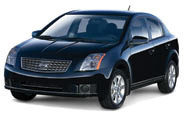 |
Make Your Money Grow with Investments
 When you invest your money to make it grow, you buy something that will become more valuable in the future than it is today. When it is worth more, you can sell it for more than you paid. This is called making a profit.
When you invest your money to make it grow, you buy something that will become more valuable in the future than it is today. When it is worth more, you can sell it for more than you paid. This is called making a profit.
One example of an investment is stocks. Stocks are shares of ownership in a company. If a company has divided ownership into 50 shares and you buy one share, you actually own one-fiftieth of the company.
If you buy shares in a company today and the company later becomes much more successful, your shares will be more valuable and you can sell them at a profit. But if, instead, the company later becomes less successful, your shares will be worth less than you paid for them and selling them will result in a loss instead of a profit.
Whenever you invest, you take a risk. You can make a lot more money this way than you can by depositing money in a savings account or buying a savings bond. But you can also lose all or some of your capital (another word for money you invest).
How to Pick the Right Stocks
When we look at investing for profit, we worry about risk. We want to reduce our risk by knowing as much as we can about the company we might invest in.
It's not hard for you to find out which companies are successful. Kids are some of the best stock pickers around! Just ask yourself and your friends these questions:
What brand of soda do you buy?
What video games do you like best?
What brand of sneakers do you wear?
What clothing stores do you shop in?
What breakfast cereal do you eat?
When a lot of kids tell you they buy from one company, you can do some research to find out if it is a moneymaker. One of the easiest ways to do this research is to look at the financial pages in the newspaper.
Activity: Find the Federal Reserve
The Federal Reserve System, our government's bank, is divided into 12 regional banks across the country. Federal Reserve Banks are in these cities:
Which one is closest to you?
- Atlanta
- Boston
- Chicago
- Cleveland
- Dallas
- Kansas City
- Minneapolis
- New York
- Philadelphia
- Richmond
- St. Louis
- San Francisco
 What we should all know but don't really understand
What we should all know but don't really understand
If you never ever want to worry about money then you really must keep the following formula in mind whenever you make money and spend money. By following this formula, you will be richer tomorrow than you are today.
Income > Expenses = Money
As long as your general income is greater than the money that you spend then you are on the way to becoming richer.
Of course we all know that the more you save, the more money you will have in the end for various purposes (buying bigger and better things, or for bigger and better investments).
BUT, whatever you do please refrain from following the one sure formula for being poor and broke and unable to buy anything:
Expenses > Income = Debt
 A goal is something that you want so much you will make a real effort to get it. It's a specific target at which you aim and shoot. An electronic game you would like to own can be a goal; so can the college you would like to attend.
A goal is something that you want so much you will make a real effort to get it. It's a specific target at which you aim and shoot. An electronic game you would like to own can be a goal; so can the college you would like to attend.
Money is useful to meet your goals. Sometimes, all you need is money, like when your goal is to buy something. Other times, money is only part of what you need; if your goal is to attend a good college, you need good grades as well.
To get what you really want from the money in your life, it's very important to set goals and know how much they cost. When you do this, here are some of the good things that happen:
- You don't waste money on things you don't really want.
- You can give up the things that are less important to get the things that are more important.
- You can go on to the next goal when you reach your first goal.
- You are happy even if you are working hard, because you look forward to the reward you know you will get.
Cheap and Expensive Goals
There are two types of goals:
- Short-term - things that you want right away
- Long-term - things that you want for the future
Some long-term goals might be going to college, buying a house, or opening a business. Some short-term goals might be buying a bike, going on a school trip or buying holiday gifts for you family.
Most long-term goals cost a lot of money. But so do some short-term goals. Many teenagers, for example, want to buy a car as soon as they get a driver's license - a short-term goal, but very expensive.
Sometimes, you must give up short-term goals to reach your long-term goals. No one gets everything they want, but there is a way to get most of what you want. The way is to make a plan.
 A weird thing about money is that every time you spend it, another person earns what you spent.
A weird thing about money is that every time you spend it, another person earns what you spent.
When you buy a juice box for 50 cents, you pay the storekeeper with the money you spent for it. You are the consumer; he is the producer. You spent; he earned.
Then, when the storekeeper wants to buy something for himself, he will spend your 50 cents. The storekeeper becomes the consumer. The person he buys from, the producer, will earn that 50 cents. This shows us how money keeps moving all the time.
The grand total of all the money spent and respent from what is made to be sold is our gross national product (GNP). It is a good measure of the wealth of our country.
If consumers stop spending, producers stop making things to be sold. The GNP gets smaller, and the country gets poorer.
If consumers start spending, producers begin making more things to be sold. The GNP gets larger, and the country gets richer.
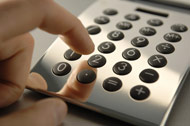 Money, Money Everywhere
Money, Money Everywhere
When you find a penny on the street or you watch your mom pay for something at the store, do you ever wonder where the money comes from?
M-1 Means All the Money
Our government, mostly through an agency called the Fed (short for Federal Reserve Board), decides how much money to print. The money who work for the Fed count all of the money "out there" in circulation. They check how much is in bank accounts and other places where people keep their money. They check how banks are lending money and whether it's easy or hard for people to get a loan.
They add up all the money out there and call the total M-1.
- If M-1 is high, there is too much money - which can make prices go up. Rising prices is called inflation. When M-1 is high, the Fed can print less money and do other things to discourage people from borrowing money and banks from lending it.
- If M-1 is low, the Fed can print more money or do other things that will encourage borrowing and lending.
Recovery and Recession
Why should the government control the supply of money? Because your money and mine - all our money - is connected.
If there is lots of money, people spend. Many even borrow money and spend that. If people spend, business does well. If business does well, more people have jobs. They then have more money tol spend. This is called a recovery or an expansion.
With less money around, there is less spending, less borrowing, less business and fewer jobs. This is called a recession.
There have been eight recessions in your parents' lifetime. That shows the economy changes; it cycles from recession to recovery and back again. If we realize that times change for good and bad, we can prepare for both.
On the Front
Letter in the circle to the left of the face tells you which Federal Reserve Bank first issued it:
- New York
- Boston
- Philadelphia
- Cleveland
- Richmond
- Atlanta
- Chicago
- Minneapolis
- St. Louis
- Kansas City
- Dallas
- San Francisco
Serial Number - every bill of the same amount has a different number.
Signature of the treasurer of the United States, who is appointed by the president.
Serial Identification Number - shows the date this bill design was first used.
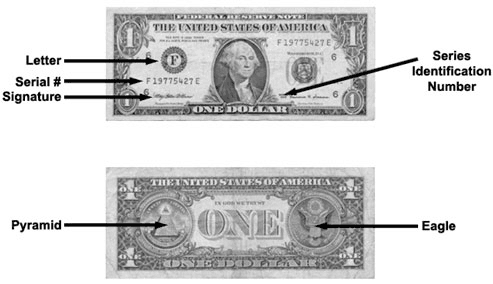
On the Back
Pyramid picture is the Great Seal of the United States. The unfinished pyramid symbolizes growth. The eye represents the watchful gaze of God.
The Eagle at the right symbolizes the 13 original colonies. There are 13 stars above the eagle's head, 13 arrows in on claw, and an olive branch with 13 leaves and 13 olives held in the other claw.
 Money doesn't have to be paper bills and metal coins. People have used many different things for money - everything from shark's teeth to stone wheels bigger than an elephant.
Money doesn't have to be paper bills and metal coins. People have used many different things for money - everything from shark's teeth to stone wheels bigger than an elephant.
Before money was invented, people traded with each other for goods and services. A farmer might trade a chicken to the doctor for medical services. But what if you're the only doctor in town and all your patients want to pay you in chickens? Trading has its disadvantages.
500 lb Coin
Money is anything a group of people will accept as payment. People have accepted seeds, seashells, rocks, beads, feathers and many other things as payment. The heaviest money ever was the stone wheels used by the people of Yap, a Pacific Island - they were 12 feet tall and weighed more than 500 pounds. (You can bet they didn't start the sporting events with a coin toss!)
King Invented Coins
People first began to use lumps of metal as money thousands of years ago. They chose rare and valuable metals such as gold, silver and copper, which were soft enough to shape into small pieces.
Coins were first invented around 700 years B.C., in the part of the world where Turkey is now. The coins were weighed and marked with pictures of bulls and lions to show how much they were worth.
The king who invented coins was named Croesus. He was so wealthy that, even today, a very wealthy person is said to be "as rich as Croesus."
Off with Your Head!
Unlike coins, paper money has no value itself, but it is accepted because it represents something that is valuable.
The Chinese were the first to use paper money. As early as 1275 A.D., the Chinese Emperor stamed sheets of black mulberry paper with his royal seal. The money was about as big as a piece of notebook paper. Even then, counterfeit money as a problem. There was a notice on the mulberry paper bank-note that the emperor would cut off the head of anyone who made fake copies!
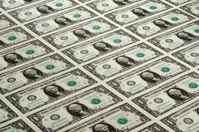 In America we're making money 24 hours a day
In America we're making money 24 hours a day
The U.S. dollar is the most widely used currency in the world today. No wonder the printing presses at the U.S. bureau of Engraving and Printing in Washington, D.C. run 24 hours a day!
All the nation's paper money is printed in Washinton, D.C. In 24 hours, the bureau can print ten million one dollar bills.
The bills are sent to one of 12 regional Federal Reserve Banks, which distribute the dollars to banks, where they go out into circulation to be used everywhere.
Just a Cookie Cutter
Coins are ade at four "mints" in the USA. Pennies are made of a copper-coated zinc alloy (an alloy is a mixture). Nickels are a mixture of copper and nickel. Dimes, quarters, half dollars and dollars have a copper core covered with an alloy of copper and nickel.
A machine cuts out blank coins from a thin sheet of metal, the same way a cookie cutter works. Ridges are put around the edges of quarters and dimes. The design is pounded into the coins.
A Fort Full of Gold
Until the mid-1800s the banks, not the government, printed money. Paper money was called a bank note - it was a promise that the bank would exchange the bill for gold or silver. But sometimes the bank didn't keep its promise. So in 1861, the U.S. government began printing paper money.
Years ago, U.S. dollars were gold-backed, which meant that you could exchange paper money for gold at your bank. That's no longer true, but the government still keeps a vast storehouse of gold in the Unites States Gold Bullion Depository at Fort Knox in Kentucky. It's protected by guards armed with machine guns and it's stored in concrete and steel vaults inside a bomb-proof building.


